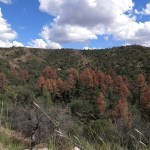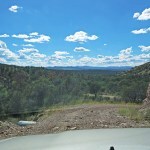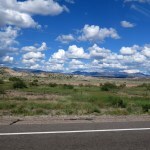Return to the Jungle
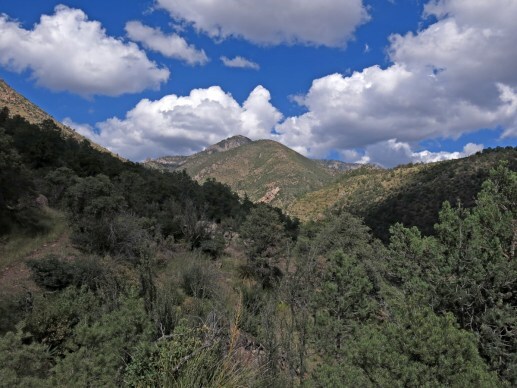
Since I injured my knee in May 2024, I’ve been looking for hikes that don’t require me to climb very much. But one of the reasons I moved here is that we’re in the mountains.
Before the injury, elevation gain was my main goal, and the hikes I did most often went from canyon bottoms to the crest, with elevation gains ranging from 3,000 to 5,000 feet. So I’ve avoided all those familiar hikes for more than a year.
I’m currently trying to limit myself to roughly four miles out and back, and while reviewing options yesterday, I realized one of those hikes actually has minimal elevation change during the first three miles. Past the two-mile point it involves a lot of bushwhacking and rock-hopping, and the farthest I’ve ever been able to go is seven miles, with 4,200 feet of elevation gain.
The last time I’d done it was January 2024, when I was stopped by deep snow on a high saddle at the four-mile point. I was curious to learn how much rain that watershed had seen during this weak monsoon.
It turned out that the long gravel road to the trailhead had been washed out or buried under recent debris flows in dozens of places. It was barely passable in my 2wd pickup truck (the Sidekick needs a new engine).
Eventually the road climbs to the ridge. Considering the remoteness and the condition of the road, I was surprised to find another vehicle at the trailhead. I hoped to run into the other hiker(s) to find out how far they’d gone and what they’d seen in some of my favorite habitats.
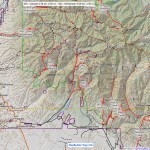
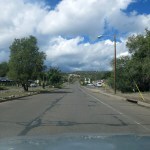
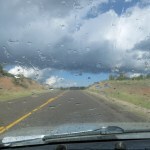
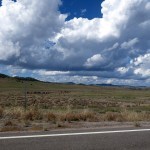
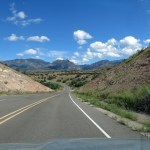
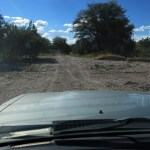
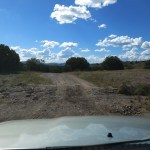
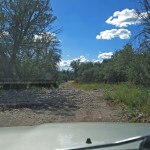
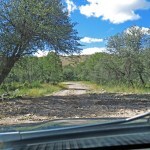
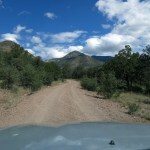
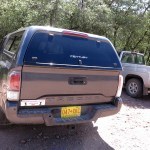
The weather was perfect – in the low to mid seventies, with drifting cloud shadows. The trail starts out following the remains of an old road servicing long-abandoned mines. It doesn’t enter the wilderness until about a mile in, and I’ve run into cattle on that lower stretch. As I got closer to the creek I could hear it rustling over the rocks.
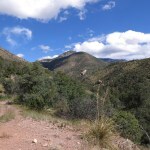
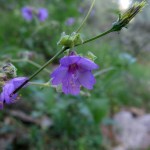
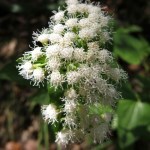
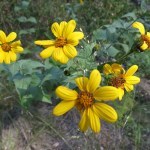
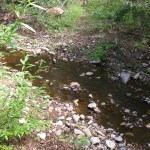
Past the first crossing, I remembered the lower part of this trail had been destroyed by a flash flood a few years ago, and finally rebuilt in late 2023. In this steep, narrow canyon a trail is virtually unmaintainable, and much of the upper trail consists of picking your way through debris flows and over logs.
I used to call this canyon “the jungle”, and it didn’t disappoint. My first landmark would be the old cabin, but I missed it in the dense vegetation. I was looking for the point where the canyon makes a 60 degree turn east – that would be my two-mile point. But with the dense riparian forest and overhanging cliffs, I actually missed the turn and went beyond it, to the major side canyon. I couldn’t remember whether this was before or after the turn in the main canyon, and my national forest map wasn’t detailed enough, but it had taken me an hour and a half to get there, so I figured I’d gone far enough.
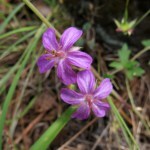
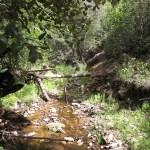
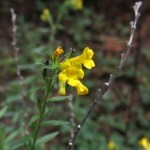
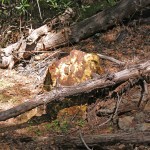
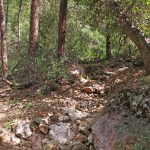
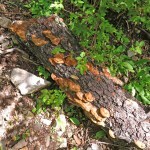
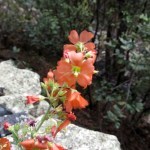
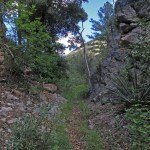
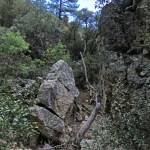
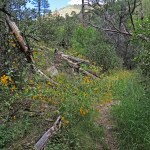
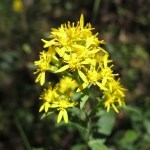
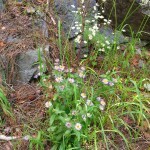
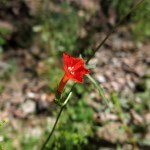
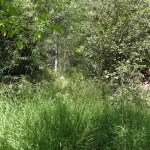
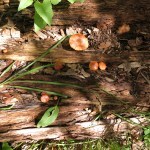
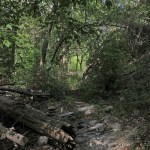
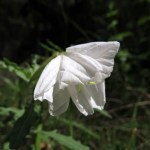
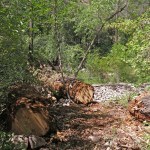
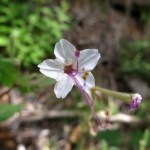
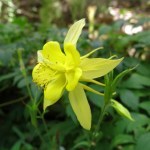
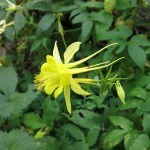
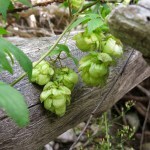
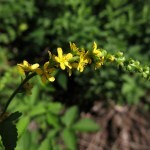
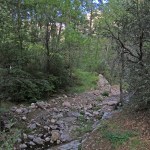
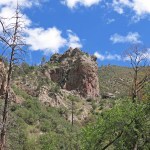
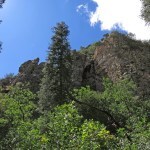
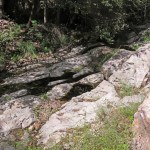
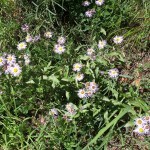
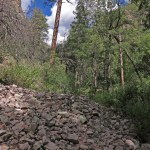
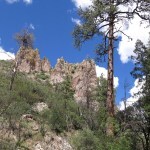
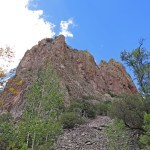
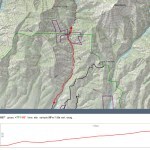
The knee brace masks any pain, and I felt like going farther, but knew I shouldn’t. Returning was easier, and finding the cabin, I was surprised to see how much it had deteriorated inside in only a few years. Nothing has been removed, it’s just messier.
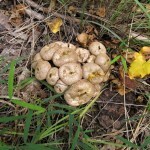
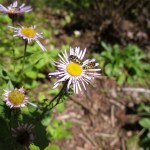
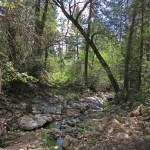
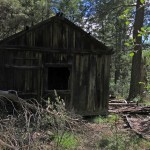
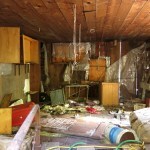
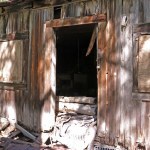
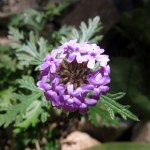
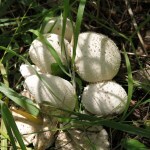
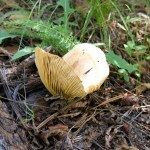
Past the first creek crossing, the old road climbs, and I got some nice views. I was sorry not to see the other hiker(s), and wondered if they were backpacking. I sure miss getting back into that wilderness, one of the wildest in the world.
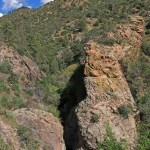
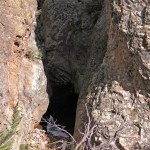
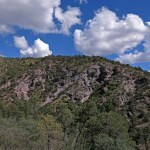
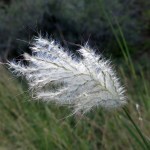
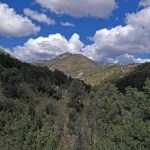
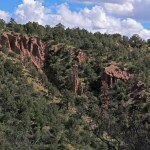
On the road out, I passed two youngish women in a side-by-side – probably from the small group I’d seen camping near the highway. Americans are far, far too affluent – the hot thing among blue collar families now is to own a huge pickup truck, a massive fifth-wheel “camping” trailer, and a side-by-side or rock bouncer – almost as expensive as your house, all bought on credit. You drive the whole setup just off the highway and live in it while exploring the back country in the little utility vehicle.
I also got a better view of the mature ponderosa pines in the lower canyon, which have all died recently. I’m guessing a series of debris flows have suffocated their roots – I’ve seen that happen elsewhere in the aftermath of big wildfires.
